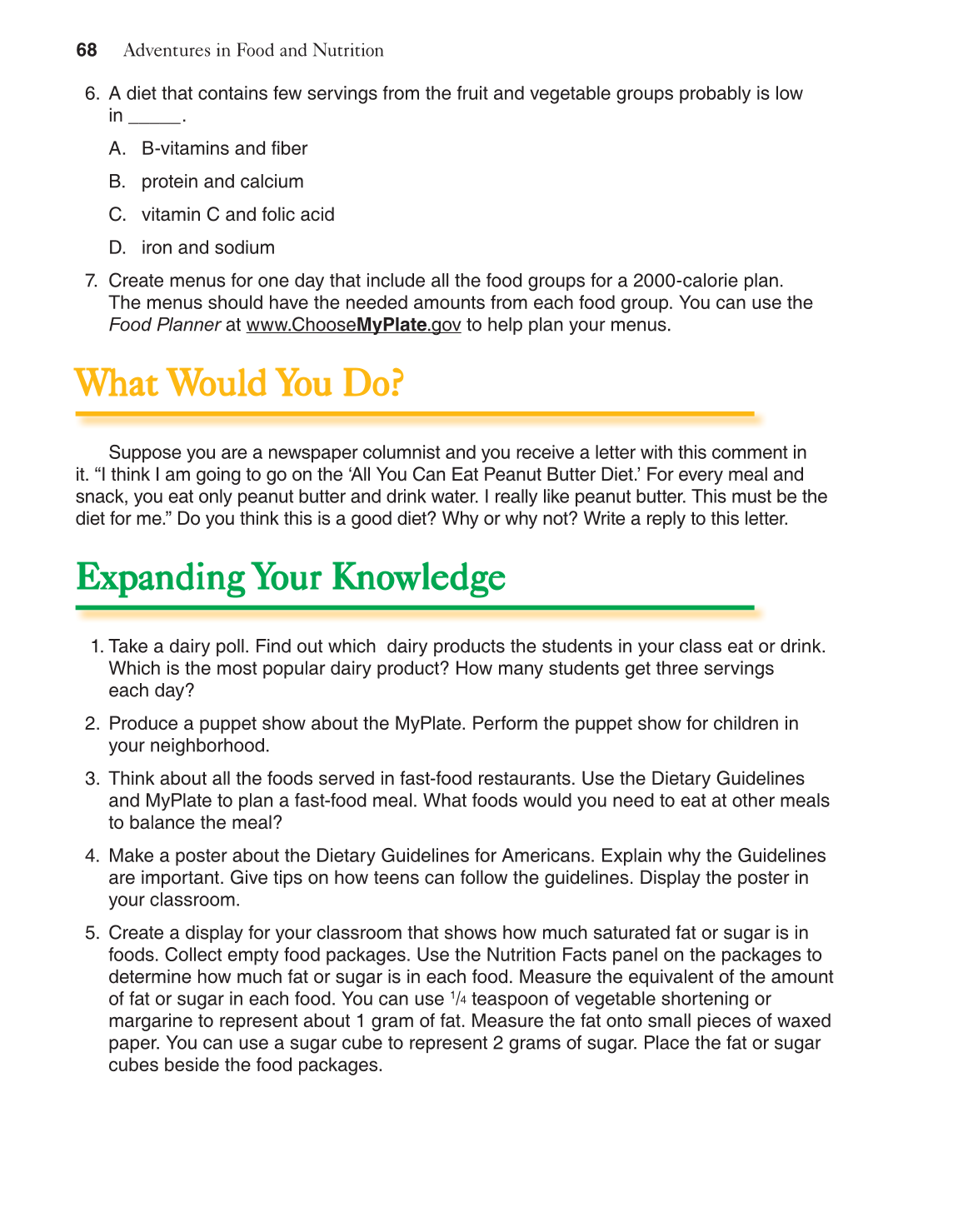68 Adventures in Food and Nutrition
Answers: In the Know (continued)
6. C
7. (Student response.)
Enrich: To fi nd poster software, visit postersw.com or use search
terms, such as poster software.
6. A diet that contains few servings from the fruit and vegetable groups probably is low
in _____.
A. B-vitamins and fiber
B. protein and calcium
C. vitamin C and folic acid
D. iron and sodium
7. Create menus for one day that include all the food groups for a 2000-calorie plan.
The menus should have the needed amounts from each food group. You can use the
Food Planner at www.ChooseMyPlate.gov to help plan your menus.
What Would You Do? What Would You Do?
Suppose you are a newspaper columnist and you receive a letter with this comment in
it. “I think I am going to go on the ‘All You Can Eat Peanut Butter Diet.’ For every meal and
snack, you eat only peanut butter and drink water. I really like peanut butter. This must be the
diet for me.” Do you think this is a good diet? Why or why not? Write a reply to this letter.
Expanding Your Knowledge Expanding Your Knowledge
1. Take a dairy poll. Find out which dairy products the students in your class eat or drink.
Which is the most popular dairy product? How many students get three servings
each day?
2. Produce a puppet show about the MyPlate. Perform the puppet show for children in
your neighborhood.
3. Think about all the foods served in fast-food restaurants. Use the Dietary Guidelines
and MyPlate to plan a fast-food meal. What foods would you need to eat at other meals
to balance the meal?
4. Make a poster about the Dietary Guidelines for Americans. Explain why the Guidelines
are important. Give tips on how teens can follow the guidelines. Display the poster in
your classroom.
5. Create a display for your classroom that shows how much saturated fat or sugar is in
foods. Collect empty food packages. Use the Nutrition Facts panel on the packages to
determine how much fat or sugar is in each food. Measure the equivalent of the amount
of fat or sugar in each food. You can use 1/4 teaspoon of vegetable shortening or
margarine to represent about 1 gram of fat. Measure the fat onto small pieces of waxed
paper. You can use a sugar cube to represent 2 grams of sugar. Place the fat or sugar
cubes beside the food packages.
